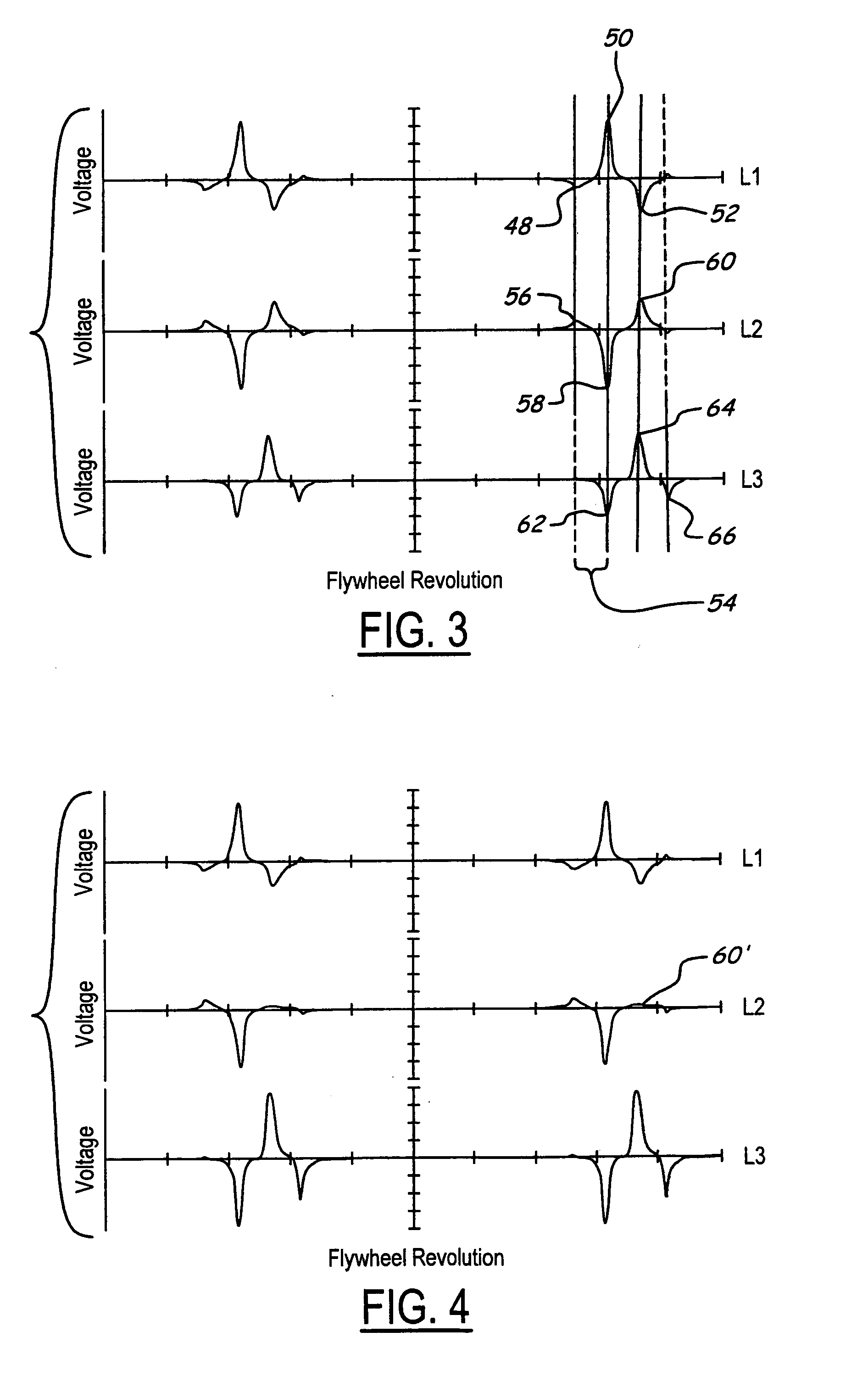Capacitor discharge ignition
a technology of capacitors and ignition systems, applied in the field of capacitor discharge ignition systems, can solve the problems of inability to meet the needs of small engine applications, so as to avoid use, prevent the engine from reversing, and improve the starting effect of the engin
- Summary
- Abstract
- Description
- Claims
- Application Information
AI Technical Summary
Benefits of technology
Problems solved by technology
Method used
Image
Examples
first preferred embodiment
[0026]FIG. 2 illustrates a capacitor discharge ignition (CDI) circuit 40 in accordance with one presently preferred embodiment of the invention that, among other things, preferably enables starting of the engine at relatively low rotational crank speed. The circuit 40 will be described primarily in reference to FIG. 2, but also in reference to FIG. 1 at times. The CDI circuit 40 includes the ignition coil having the primary winding L4 and the secondary winding L5 coupled to a gap 42 of an ignition device or spark plug for initiating ignition spark in the engine.
[0027]The charge coil L1 has one end connected to electrical ground and another end in series through a diode D1, an ignition capacitor C1, and the primary winding L4 of the ignition coil. A resistor R1 is connected across the charge coil L1, and energy induced in the charge coil L1 during cranking at engine startup is used to charge the capacitor C1. The stored energy in the capacitor C1 is discharged into the primary windin...
second preferred embodiment
[0036]Skip-spark speed-governing may be provided with the present invention if desired. Referring now to FIG. 7, there is illustrated a CDI circuit 140 in accordance with an alternative embodiment of the present invention. The circuit 140 is substantially the same as the circuit 40 previously described with reference to FIG. 2, with the exception of two additional components—a capacitor C2 and a resistor R5 added to a timing sub-circuit 146. Therefore, the following discussion will focus primarily on the differences therebetween. The capacitor C2 is connected in parallel across the timing coil L3, such that the capacitor C2 is operatively connected to the gate of the SCR S2. The resistor R5 is connected in series with the resistor R2 across the capacitor C2, between the capacitor C2 and the gate of the SCR S2. Thus, the combination of the resistors R2, R5 and the capacitor C2 forms an RC network to control the operation of the SCR S2.
[0037]In operation, as long as engine speed remai...
third preferred embodiment
[0038]In addition to the speed governing function of the previously described circuit, a timing retard function may be provided for excessively high engine speed operation, if desired. Referring now to FIG. 8, there is illustrated a CDI circuit 240 in accordance with another alternative embodiment of the present invention. The circuit 240 is substantially the same as the circuit 140 previously described with reference to FIG. 7, with the exception of two components—a transistor T1 (in place of SCR S2) and a resistor R6 added to a timing sub-circuit 246. Therefore, the following discussion will focus primarily on the differences therebetween. The transistor T1 has a control electrode or base connected to the junction of the resistors R2, R5 and primary current conducting electrodes (collector and emitter) connected across the trigger coil L2. The resistor R6 is connected in series with the transistor T1 between the transistor T1 and the trigger coil L2.
[0039]In operation, as long as ...
PUM
 Login to View More
Login to View More Abstract
Description
Claims
Application Information
 Login to View More
Login to View More - R&D
- Intellectual Property
- Life Sciences
- Materials
- Tech Scout
- Unparalleled Data Quality
- Higher Quality Content
- 60% Fewer Hallucinations
Browse by: Latest US Patents, China's latest patents, Technical Efficacy Thesaurus, Application Domain, Technology Topic, Popular Technical Reports.
© 2025 PatSnap. All rights reserved.Legal|Privacy policy|Modern Slavery Act Transparency Statement|Sitemap|About US| Contact US: help@patsnap.com



